#also the first episode is emotional whiplash central
Explore tagged Tumblr posts
Text
Sometimes you're just living your best life, rewatching an episode of Lethal Weapon (one of my favorite shows in all the land, in case you're wondering) and you see a brief shot of a character and go "heyyy your profile looks so familiar! Almost like you're in the show I was watching an hour ago--" and then she turns around and is Angela mcfreaking Lopez from The Rookie
#BRO??? HOW COULD I NOT KNOW SHE WAS IN THIS???#I HAVE SEEN THIS EPISODE SO SO MANY TIMES#HOW HAVE I ONLY NOW CONNECTED THESE DOTS???#anyways watch lethal weapon guys#clayne crawford and damon wayans are so so funny#their chemistry (platonically) is so so great#they just play off of each other so well! i love to watch it!#also the first episode is emotional whiplash central#lethal weapon#lethal weapon tv show#the rookie
4 notes
·
View notes
Text
okay i finally (finally!) finished gr*duation after what felt like three hundred years and i have many thoughts that i just.. want to get down to process my own very VERY mixed feelings on this season
overall it was a fun romp at the end with some highly enjoyable goofs. i enjoy fitz maplecourt so much & relished griffin being able to do a character. the firbolg lives in my heart. argo is great.
that said, the plot was, overall, messy as shit, considering at the end i still had very little clear idea of a) what exactly order/chaos wanted to achieve and b) why the fuck they were even doing what they were doing. we spent all that time on a hog heist that, in the end, had... very little to do with what was going on at the time. (would the narrative have been significantly changed without the hog heist? if, instead, hog hadn’t responded due to their internal greed/indifference - something that’s already been established in world and isn’t a stretch to imagine - and thus had the exact same ramifications and end result as the heist gave us? like don’t get me wrong, the heist has some of my favorite goofs in it, but it’s essentially like six episodes of nonsense that, in the end, has almost nothing to do with the main plot & whose end goal could have been summed up in the finale.) the whiplash of suddenly taking gray on as an ally to we’re heisting hog for reasons to actually the real threat was the demons at the castle attacking now for reasons is... bad plot. (look at how many times i have to say ‘reasons’ bc there’s no real in-universe or external force that explains why something is happening at that specific time.)
i haven’t listened to the final ttazz about grad but it kind of felt like travis just gave up on his narrative arc and this sloppy plot mess is what we have left. like, okay order/chaos is a cool concept but what were they actually trying to achieve? why could order just be booted out of their shared body and why didn’t they just do that instead of having that whole climatic battle? why both using fitzroy at all for anything if they could always just take over the world with demons? why did we have all these characters allied together if in the end we were going to op the three pc and have them fight basically one-on-one with order? why did the commodore suddenly and inexplicably switch sides after working with the boys literally like three episodes ago other than to shoehorn in a conclusion to argo’s arc that, ultimately, fell short bc it was so utterly anti-climatic?
and like!!! maybe some of these questions were answered but none of them to an extent that felt grounded enough in the narrative that they made sense, lingered, or didn’t feel like a macguffin to cover a sudden plot twist or plot hole. a lot of plot felt sacrificed for cool concepts and fun character twists and i get that, but when all you have is cool concepts and fun character twists, there’s no real foundation for it to rest on.
i AM going to compare to amnesty bc i do think amnesty is the strongest arc plot-wise of the three major seasons of taz. balance recovers in the back half but the first three parts are very loosely connected to the major plot and then there’s that huge info dump in crystal kingdom so like - it’s also messy there, even though it manages to make it work in a way that graduation doesn’t. but amnesty is tightly plotted from the beginning - there’s a clear trajectory, foreshadowing built in, characters have actual arcs that make sense, most of the major villains and antagonists have motivations that make sense and even the act three twist is something that’s reasonably built in from the beginning. even if it wasn’t ALL planned (such as billy the goat’s involvement) it’s clear that new elements were worked into an already existing framework with an eye towards cohesiveness. i know people complain about the main three not being “together” enough or “friendly” enough with each other (as if that’s all that matters in a good story lmao) but i also think that amnesty has the strongest character arcs of the three seasons because we do see all three major characters start in one place and end up somewhere radically different, make movements in cohesive and reasonable ways, and change in a way that is not off-the-wall or just for a fun twist.
graduation... doesn’t really do that. the main three are a fun time but in the epilogue i was genuinely struggling to get why fitz decided to suddenly be a lawyer or why the firbolg, who has never shown any interest in having a name before that moment (quite the opposite, really) is suddenly emotional over having a name. argo, who has spent all of his time honoring his mother, decides to... run a cruise ship? and even leaving aside the epilogues, these characters... don’t really have an arc. argo is the closest and even his emotional narrative falls flat bc the commodore’s ending is so anti-climatic and bc, other than the trial scene, he and the commodore largely don’t interact. if the commodore had played a larger part in the actual narrative maybe it would have felt less like an aborted attempt at an arc but. he didn’t. fitz also has an attempt at an arc but it also falls flat bc so much of fitz has remained unchanged from when we first meet him. he’s a little more empathetic and better at magic, but how has fitz really changed since the first episode?
(tangent: thinking again about justin having to ask why the firbolg was doing what he was doing during that whole dog-is-the-headmaster reveal portion, to the point of asking travis point-blank why his character was doing the things he was doing. thinking again of how travis just told the boys point-blank that this side character they couldn’t even remember the name of was their best friend. and then again about how that “best friend” just like... fucking disappeared from the narrative after that, never to be seen or heard from again until the epilogue twenty episodes later for two brief seconds. in fact pretty much every character except rainier just disappears from the narrative at a certain point and i’m pretty sure it’s in reaction to the complaints about the numerous characters - but the answer to those complaints wasn’t to just mysteriously cut everyone else from the narrative without warning or reason laksfsafjlfj. what happened to that one villain posh guy from the first episodes???? what about the accounting owl teacher??????)
this is just my rambly processing of grad bc i’m trying to figure out what about it fell so dramatically flat for me that it was a literal slog to get through most of it even though i found the characters themselves delightful and enjoyed the mcelroy goofs as much as ever. and i think the thing is... for some listeners, the most important thing is going to be the interaction with the players or the goofs or how friendly and found family-ish the main group is with each other. which is great and fine! but for me, a good story or good character arcs or something well thought-out and plotted out is always going to be more engaging, no matter how much i like the found family or how much i like the goofs. it’s why i struggled to get why people complained so bitterly about amnesty - who cares if the main three are always together or getting along really well or being friends if they’re having interesting, satisfying character arcs and personal growth set in an interesting, dynamic plot? in graduation, that foundation is just missing and i’m sure part of it was due to the unnecessarily vitriolic backlash against travis (that’s enough to steal anyone’s thunder) but also just like... an underdeveloped plot in an overdeveloped world, a trap so many authors have fallen into. (like travis can describe in minute detail the inner workings of hog that are only applicable for about five episodes but chaos/order’s motivations are largely handwaved despite them being the central antagonists for the entire season.)
anyway. once again, great goofs. i would die for fitzroy maplecourt. but i can’t imagine ever listening to the whole thing again or even more than a couple of episodes here or there (ironically of the hog heist, which, despite how unnecessary it was, was a fun romp and had some of my favorite moments. so, you know. sometimes unnecessary is still good lmao).
#also if literally anyone says that it's all bc of travis' adhd or w/e One More Time i will lose it#look i also have adhd and i am still capable of writing a cohesive plot okay??? having mental illness does not#somehow prevent you from being able to write a cohesive and well-thought-out story#i do think he got some very unnecessary backlash and a lot of the problems in gr*d were also present in early balance#the difference is that balance... balanced out eventually and grew stronger#whereas gr*d collapsed in on itself and became a mess plot-wise#and even tho i enjoyed the characters i felt no real emotional investment in their arcs bc their arcs were... not really arcs#anyway i dont regret listening to it BUT it was a slog & i dont think i'll ever really relisten#taz
12 notes
·
View notes
Note
Hello! I’m a new aos watcher, so I apologise if this is a repeated rant, I just wanted to vent a little and found your blog :) I just finished through season 3 and 4 and those were really… rough on fitzsimmons, more so than the first 2, and I think it’s because the writers were so inconsistent? 3A was just a mess to jemma. she was so hot and cold, but not in the way you’d expect from being on a planet. it was like watching a different character almost every other episode [1/6]
[2/6] she has ptsd, then she doesn’t, she’s professing love for fitz, then professing it for will. I was getting whiplash! It felt like the writers put her through hell and then didn’t know how to come back from it, but gathered their bearings in 3B (although if I’m honest, that felt a little cheap, because it was a redo for her relationship with fitz but she still never got to react to being on a freaking alien planet!)
[3/6] and then season 4 was so hard to watch how they tore fitz down. I just find it so hard to believe that, without jemma, fitz would be such a monster, because he had to be a good person too, right? otherwise its like he had 0 personality before jemma and she carved him into who he was, but that doesn’t make sense. I guess I’m still shocked that he never woke up from it, even though everyone else did. it felt like the writers pushed him far (too far) and didn’t know what to do with him.
[4/6] I haven’t seen season 5 so I hope they mention it a little bit, but it was a real struggle to see how extreme they went with him, and Im honestly struggling with whether or not i should go on because the writers seem to love to push them to extremes and then backpedal and not in any way that resolves anything, it really makes me cringe sometimes!
[5/6] I also thought it was strange that fitz got a chance to say, very clearly, that he would always choose jemma over anyone, but that jemma never said anything about that for will? I get that jemma is more reserved than fitz, but I’m still a little sore about that, it doesn’t help with fitz looking like besotted second choice, is all I’m saying. I guess I’ll have to see in the later seasons…
[6/6] anyway, i'm sorry for this, i had about 4 seasons of angst built up in me and i didn't know who to turn to! i really like the show, but i am starting to try and watch with less and less expectations because i keep getting my hopes up for a real resolution and it hasn't happened after almost 100 episodes... thank you for listening and for being so friendly from what i see! i hope i haven't poked old wounds or anything !
Hi Anon!
Welcome to the Fandom, and you have no idea how much these kinds of asks are right up my ally over the years. I’d say go digging through my blog for more of the metas but that is spoiler central in there so I hope this will suffice until you are done.
First and foremost I don’t want to spoil anything for you but I’ll say to you what I said to the fandom at the end of Season 4....just hang in there we have to trust that the writers have a plan. I”m REALLY gonna stress this one cause I have a feeling you’ll be back.
Season 3 does indeed hold many old wounds and a pile of story lines that started and then went no where or flat out didn’t make sense. The whole Space Rando thing was upsetting to say the least but I will tell you the writers said in the Season 3 Declassified that he was nothing more than a roadblock in getting Fitzsimmons together, 12 episodes, but that is what is was. Were there other ways they could have worked with a more father figure Space Rando and Jemma’s PTSD for that delay, yes, but to be very honest they did not have the real estate to do that kind of story the justice it needed with everything else going on. It is also worth noting they had to fire the actor that played Will and in that had to change a few things, IE Hive was Ward. Real estate wise the cast had gotten pretty large at that point and there just wasn’t enough time to properly deal with all that was going on.
Season 4 they did much better, had things mapped out better, but that still didn’t change the fact that I suspect there were a few lane changes story wise . Again thanks to the declassified books. And over the years I’ve done A LOT of metas on the Framework and I think something that gets lost a lot is what Radcliffe said he wanted and what AIDA actually did when it came to fixing a regret.
Radcliffe told AIDA, in order to keep the team quiet and not trying to bust out like May did, was to take away a regret. And for May that was Bahrain. That change was what set up the hell scape we came into with Hydra in charge. Radcliffe was blissfully off on his happy Island with no clue what she was really up too until it was too late.
After 4.14 when AIDA got her hands on the rest of the team she didn’t do like she did with May, Change her biggest regret, rather she changed A regret and for everyone but Fitz stuck them somewhere where they wouldn’t get in her way. Mack got his daughter back and was ready to die in there with her. Mace got to be the Hero Inhuman Leader he always wanted to be. Coulson was a teacher. May was where her regret left her. Daisy (had she been replaced) would have just been another foot soldier in Ophelia’s army. And Jemma was where she could never ever have a chance of getting to Fitz because she feared their love and that Jemma would take him from her. And I have proof those were not the regrets that they would have had fixed and I’ll circle back to that in a second.
Fitz was her target all along. She knew from the Darkhold she needed him for what she wanted. Looking Glass and Love. However, she didn’t realize that his heart always was Jemma’s and when he wasn’t brainwashed and controlled within an inch of his life that he’d leave her in a second. She mistook his previous acts of caring and empathy as love and had no understanding of the depths of human emotions. IE you can love people different ways. Sure he cared about AIDA but he loves Jemma with his heart and soul and vise versa.
As Fitz was her target she fixed things so that she could insert herself in his life in Jemma’s place and that he would have grown up with his awful father who taught him that cruelty and power was the way to go. This also kept out any positive and caring influences like his Mother, Jemma, and the team.
I said I had proof that some of those regrets weren’t necessarily what the team would have picked. That came via Self Control from Robo Coulson and Robo Fitz bearing in mind these LMD’s all had scans of who’d they replaced. Their memories and their desires.
Robo Coulson told Robo May to let this whole hostile takeover happen because in the Framework they were happy and together. That was decidedly not the case there though their connection ended up proving crucial to getting everyone out.
Robo Fitz told Jemma he was doing this for her so they could get married, grow old together. Had he known he would be sending Jemma literally into the grave Robo Fitz would not have gone along with the plan. He thought he was getting Jemma and they were going to go live their own Happily Ever After in there. Yeah, not the case either.
With the not waking up, no one but Coulson woke up and that was only thanks to Tahiti. And yes, it was brutal. Every week my poor ask box got more and more upset and as a fandom we were more than ready to get the hell out of there. I mistakingly died on the hill that Jemma would snap him out of it (though I did accurately predict the second Fitznapping....yay). She didn’t because this isn’t Once Upon a Time, True Love’s kiss doesn’t break the curse of having your mind completely wiped by an evil LMD and the Magic Demon Book. Now looking back it does make the fact that the second he had free will again, despite that other manipulated life where he was dedicated to Ophelia, it was still Jemma.
Oh and Jemma did choose Fitz over Will, when the sandstorm hit. She continued to go to Fitz and left Will....she would have never left Fitz in a sandstorm with the evil monster lurking about.
That all being said sometimes crap just has to happen to move the story ahead and there is always a price to pay for the good. I do think the Framework went too far but at the same time the writers were making a bit of a political statement there and they saw how good Iain was with evil bad guy.
Shippping Fitzsimmons is a lot like a Marathon and you are about to the “What on earth have I done to myself,” point of the race. But I promise the feeling of crossing that finish line at the end can’t be beat.
6 notes
·
View notes
Text
On Second Citadel and unity
It was interesting to me that, after making Junoverse a very poignant gender utopia (and general lgbt-utopia, too), Kabert went ahead and made their second storyline so heavily centered around bigotry and discrimination (dealing with topics of ableism, mysogyny, homophobia). now, obviosuly, Junoverse is not even remotely free of inequality, and as far as the mentioned topics are handled this utopia is not disability-friendly, with prosthetics not being readily available with no charge, which, like many other things, strips people of their autonomy, turns them into a rich man’s plaything. But here inequality is arguably explored from the point of exploitation of one human being by another, of abuse of power (interpersonal and social-scale). Whereas Second Citadel opens with an episode about two knights - a disabled one and a woman one - both of whom struggled for similar reasons, so there is supposedly little power imbalance here. And yet they do not see eye to eye, even more so, one of them furthers the other’s discrimination. We can speculate that that’s Sir Caroline’s effort to fit in - strengthen the sense of her hard-earned belonging by othering someone who never got that right to belong. Which doesn’t make it any less infuriating and damaging, but sets the tone of the story very well. There is no strong thriving off the weak. There are just people infinitely rejecting one another on the basis of their differences, often under the weight of their own rejection.
The topic of ostracization and discrimination is tackled in almost every arc of SC, but the idea of othering extends beyond it. The central conflict, the ongoing war is between monsters and humans - and while we’re more familiar with the human side of it, while we may learn more about the history of their conflict and who wronged whom first and worst, for now we’ve seen both humans and monsters express deep disgust for each other and one another’s way of living. And then the same happens on a smaller scale, within one species: we see the mutual disdain between Northerners and Southerners. Sir Caroline is different not only as a woman but as a foreigner; the Cinderclasp episode made it far too clear that the attitude to foreigners in the South is no better.
And all of that unravels against the backdrop of pretty phrases about unity that get repeated over and over. “Strength in Unity”. “Two in unity, simple, strong”. I believe those are not instruments of irony, however, but keys to the central message, echoes of this societies’ past and - hopefully - foreshadowing of their future.
Sir Caroline twists the meaning of that unity in order to keep her authority:
ANGELO: Sir Caroline, I really don't think-- CAROLINE: What is the primary edict of our Citadel, Sir Angelo? ANGELO: Strength in unity. Of course. CAROLINE: And the sooner you all remember that, the safer humanity will be in these Northern Wilds. Hypocrites. The lot of you. Unified only when it’s convenient. No better than monsters in that way: greed governs all, and everyone just does what they want to get what they want. If you just listened to authority, real authority, you might actually be safe.
And that happens to highlight what unity is not: giving up one’s autonomy and approach and unique competence to fit into someone else’s model of desired reality.
Here Damien’s words about perspectives come into play. However labored and uncomfortable they were, showing his inability to not fixate on what separates others from him, they are important as a piece of the meta puzzle: they make us think of inherent value of different experiences.
DAMIEN: My kind, kind friend. I agree that it is a shame that we cannot trust these men. They would be valuable allies, as Sir Caroline was – for moving through the world as she has, in a life quite different from ours, has clearly gifted her with ways of thinking that you and I would never come to. ANGELO: Very true, very true. DAMIEN: And so I am certain that given Marc’s...situation, he too must have a perspective of great value in our mission. But the simple fact is that he cannot be trusted.
The importance of these lines is backed up in Lady of the Lake, when Caroline is instructed to use specific characteristics of her subordinates and turn them into strength that would aid the mission. We are told over and over that true unity is in embracing our differences, valuing them and working together to make these differences work in everyone’s favour.
There is something to be said about quite careless exploitation of Damien’s neurodivergency of course, but that is once again the warped verison of true unity, showing what unity is not, but also simultaneously giving us some idea of its potential. At the core, behind Sir Caroline’s personal errors, the message is kinder, broader. We are told again and again that the importance of the unqiue approach, unique way of thought, unique operation of our minds can enrich our shared experience and cooperation beyond measure.
So when later on Sir Caroline instead tries to suffocate any challenge to her authority, any alternative point of view, it comes as the biggest whiplash.
And of course, when discussing the monster-human antagonism in this vein, the Moonlit Hermit arc gives some truly invaluable material. Rilla and Arum’s interactions are strongly based on the differences of their approach to the world, with Rilla’s being a rational one and Arum operating on what can be called intuition, spiritual sense and probably instinct. He despises attempts to rationalize the free broad flow of the universal energy.
And what we see is two of them coming together, sharing their views of the world and finding something useful, fascinating, beautiful in the point of view that seemed so unthinkable before. That culminates in the truly breathtaking scene of their discussion of the nature of music, whether it’s magic or math:
RILLA: I mean..why can’t it be both? ARUM: Nonsense. RILLA: No, I mean...maybe that’s what makes music special. It uses these predictable scales and measures and combines them with some unpredictable, something-- ARUM: Magic. And what comes out isn’t really either. It’s...more.
“It’s more”. Can’t overstate how hard this hits. And the parallel between this theory and Rilla and Arum’s relationship is more than on the nose, proving to us once again that the idea of unifying our different experiences and perspectives as something incredibly valuable, something that creates something new, rich, priceless, that is more than just a sum of the two, is central to the narrative.
What is interesting to me in the Moonlit Hermit arc is the distinction that is made between the monsters and the humans. Humans are supposedly rational while monsters speak of magic and the Universe - what a fun narrative is that! Monstrous spirituality... And then later on we have Damien raging at his saint, yelling “It is only monsters who listen to their heart above all!” - but apparently it is not.
The new season offered some helpful context to that, specifically - the Thought Stream. Obviously referencing the Tarot, it has four suites resembling the Minor Arcana while what can be called the Major Arcana is not a part of the deck usually but something that appears unpredictably (specifically: Olala’s card that does not belong to the Wilds, Wastes, Frosts or Mirrors suit).
The four Tarot suits (Swords, Cups, Wands and Pentacles) represent different areas of our life, separated: Intellect, Emotion, Spirituality/Creativity and the Material. Mind, Heart, Spirit and Body.
The four suits also correspond with the four elements. And Water is the one corresponding with Heart, with our emotions. I do not think it to be a coincidence that Saint Damien - the one encouraging his follower to listen to his heart, teaching him tranquility i.e. not losing oneself in the stream of emotion, the one teaching how to let one’s heart guide not stir - has water and the waves as his symbol.
So if Damien is Heart, Rilla is definitely Mind: she is analytical, a determined problem solver. I believe Arum represents the Wands: the Spirit and the fire - and that it is a symbol connected to monsters’ society in general.
Wands suit deals with passionate creation, with realizing one’s vision, bringing something into the world. That seems in line with the monstrous philosophy in general. They talk of one’s place decided by the Universe, they say one is justified in their actions as long as they truly do what they want, follow where their passion guides them. There is quite a bit of hypocrisy there as we can see in the Spiral Sage arc, the monster society may just be keeping the platitudes while giving in to the power of the strongest no matter the Universe’s place for the weak - but the ideal is still there, and it is one Arum seems to follow wholeheartedly. (Hence his interpretation of Damien seemingly abandoning his path as a lack of character.)
The same idea - one’s place in the Universe - is brought up again in the first part of “The Fool in the Garden of Death”, showing this belief spreads beyond monsters’ society, into the Western Wastes. None of the elements, be it Heart or Spirit, are strictly one species’; however, we’re dealing with different cultures and ways of life people are most accustomed to, prioritizing different aspects of life. And we’re being shown that maybe engaging with each other is what those cultures are supposed to do.
The Thought Stream’s deck is made up of four suits corresponding with four ends of the world, four parts of it. Where in Tarot we have aspects in Thought Stream we have places. This reinforces the concept of different aspects of life, different ways of approaching it, corresponding with specific societies.
Each of the suits is given an identity, but all of them make up one deck.
After all, what’s one aspect of a being without all the rest? Reign of just one’s Mind, Heart, Spirit or Body - how long can it last before turning destructive?
True strength is in balance of different elements - in unity that recognizes the value of each of them.
I have a theory that the ideals of the Second Citadel are the forgotten and revamped mottos of the beings of Fort Terminus: “two in unity” being not two partners but two worlds, monster and human, coming together to create something that is more, something new and powerful and full of potential. Capable of building something as impressive as the Bridge. I also have a theory that the Bridge is a parallel to the Tower of Babel. Which brings us to the idea of a divided world unable to see past the differences between societies, and through that losing the power that unity used to give it.
Showing the world where difference is shunned and leads to ostracism, where people that come from different places fail to acknowledge each other’s humanity and refuse to embrace their differences, where two species fail to accept the other’s way of living and deny the enemy their humanity/monstrosity, the Second Citadel storyline is offering a greater value as an endgoal: embracing difference and diversity, seeing strength in what sets us apart from each other, and recognizing that we all complete one another, like the four aspects of our own being, like four pillars upon which the sky rests. Deny one single pillar’s importance and wait for it to come crashing down on you. It says: to know true strength, we should welcome any and all experience, all of the unique perspectives, celebrate the differences that make our shared existence so much richer and make us so much more capable to deal with challenges of life. Strength in unity - not in uniformity.
#this got long and i blame kabert for their splendid writing#the penumbra podcast#tpp#second citadel#analysis tag
80 notes
·
View notes
Text
The Blues Soundtrack Netflix's Unconventional Murder Mystery 'The Eddy'
"The Eddy," hitting Netflix Friday, finds Oscar-winning director Damien Chazelle helming the first two episodes of this family drama/murder mystery set within Paris's jazz scene.
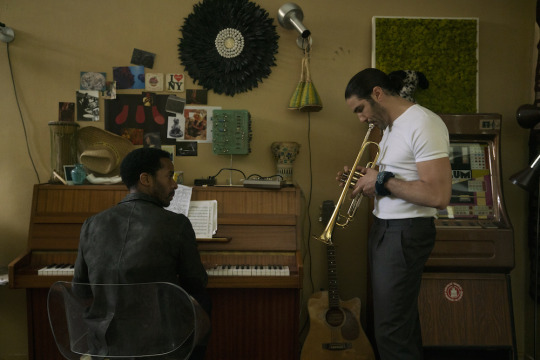
With Netflix seemingly focusing on releasing broad and big-budgeted TV series (like "Hollywood" and the upcoming Steve Carrell starrer "Space Force"), and films ("6 Underground," "Extraction"), "The Eddy," an atmospheric and niche show that's emotional and sophisticated, feels like a miracle. It's a family drama that quickly gives way and becomes a murder mystery of sorts that's set in the dark-lit alleys of Paris's jazz scene.
Setting the show's tone is Oscar-winning director Damien Chazelle, who won during the iconic 89th Academy Awards ceremony for his big-budget and starry musical "La La Land." But "The Eddy," created by British screenwriter and playwright Jack Throne (who has writing credits on all eight episodes of this limited series), is a somber tale and Chazelle dials things back and plugs into the blues. Though Chazelle has shown off what he can do on the big screen, like winking at the MGM musicals of yesteryear and creating breathtaking set pieces as in his 2018 emotionally-driven Neil Armstrong biopic "First Man," he opts for a French New Wave style of filmmaking with "The Eddy," which also marks his first dip into TV. Like his breakthrough film "Whiplash" (about a mentally and physically abusive music teacher and his driven high school student, played by J.K. Simmons and Miles Teller, respectively), "The Eddy" is an intimate and personal story told on a similar scale. Chazelle helms the first two episodes of the series, utilizing natural lighting, a shaky camera and lots of closeups, and like the greats of the French New Wave, "The Eddy" often feels like a docuseries. It also helps the drama is carried on the shoulders of Andrè Holland ("Moonlight," "The Knick"), who has never been less than interesting and is one of America's best actors going.
In "The Eddy," Holland plays Elliot Udo, an ex-pat living in Paris and running the titular jazz club. He's got a troubled past, leaving behind his problems in America to live the life he wants in the City of Lights. He's a famous jazz pianist but has since retired after the death of his son. Now divorced, he's focused on running The Eddy with a house band and his business partner / best friend Farid (Tahar Rahim). But the club is struggling and folks aren't flocking to see the Elliot-assembled band, with lead singer Maja ("Cold War" breakout Joanna Kulig). It's soon revealed that Farid might be cooking the books and making some shady deals. On top of that, someone is murdered just as Elliott's teen daughter Julie (Amandla Stenberg) is about to come and live with him, propelling "The Eddy" into its main narrative. Each episode of "The Eddy" is named after a character in the show and mostly follows that person's point of view but Elliot is always at the center of the show — and rightfully so. Holland is exceptional here; he's flexible and emotes perfectly and is essentially the show's driving force, which can feel weighty when it veers off its central plot. Like in the third episode, which is centered on Julie. She's dealing with adjusting to a school in a new city — and country — and reconciling her feelings with her father. She's also dealing with the reason why she left her mom and stepfather's home in America. She soon lashes out and gives into her self-destructive behavior only adding stress to Elliot's life, which has been completely turned upside down.
At times, "The Eddy" can get too into the weeds. There are beautiful scenes that play out showcasing a side of Paris we rarely see; often spotlighting its Muslim communities. For how dreary the show can feel, it is often balanced with life and beauty. At the funeral of said person who is murdered, the somber event quickly transforms into a New Orleans-style of celebration when members of The Eddy's house band, including Maja, begin to celebrate the person's life with free-flowing jazz. After Chazelle's first two establishing episodes, French filmmaker Houda Benyamina, best known for her 2016 Cannes Film Festival hit "Divines," takes over. Then director Laïla Marrakchi, who earned recognition at the 2005 Cannes Festival with her film "Marock," takes the reigns. Finishing out the series is veteran TV director Alan Poul ("Tales of the City," "The Newsroom"). The same style is mostly kept throughout the rest of the series, capturing what feels like off-the-cuff real-life moments that soundtracked by a beautiful score. There are no gimmicks in "The Eddy." No camera manipulation or manipulative story devices. It's an authentic experience from the first note you hear.
9 notes
·
View notes
Video
tumblr
Linked from ElseworldsClips: https://www.youtube.com/watch?v=y_W32zM60dA
If the writers wanted to demonize Iris and put more baggage on Candice for playing Iris West, this would surely be one way to do it.
So many writing errors are present here, and it would be a challenge to unpack them all, but I’ll try to keep it brief:
Iris isn’t bothered that Nora worked with Thawne? Yikes. This is going to whiplash on Iris so badly. And clearly, according to the promo, it is wrong. There is Iris, at Iron Heights in front of Thawne’s cell, beseeching Nora to get away from Thawne. Obviously, she doesn’t think Thawne needs to influence her child, her and Barry’s child. But you cannot tell that to racist fanboys and fangirls, who viscerally hate Iris and frequently bubble over with that venom for no reason at all.
The Insecure Girlfriend/Wife archetype. You know the kind of writing where the girlfriend is pouty and upset because her boyfriend won’t “open up” or “share” about all the life-altering burdens he is carrying on his shoulders. Alone. This is outdated and regressive. This leads to Iris ...
Failing to Acknowledge Facts. Iris, I love you and will forever be a proud member of the IWDS. But girl. Barry didn’t walk into the Speedforce at the end of S3 to take a pre-wedding vacay. Did you not notice that said entity was tearing up Central City, being all extra and striking people with lightning? Either Barry paid his penance or Central City would have been a Black Hole. And girl, you SPOKE TO the Speedforce iteration of Nora Allen. It was not an invitation. Barry did not leave you. Barry was being apprehended, tried, convicted and locked up.
Flashpoint. Please leave Barry alone about this, already. Not just Iris, but everyone. He was at the lowest point of his life, crushed by grief and despair. And the Flashpoint/Paradox episodes were rife with inconsistency and logic holes, so much so that even a Forbes writer pointed out one in particular. Personally, it is only dogmatic comic canon that Nora’s death was necessary to keep the world together. Has there ever been a plausible, credible or sustainable connection to things going wrong in Season 3 because of Flashpoint -- other than “just because?” Everything that Barry was blamed for in that season was retconned away or forgiven, so I’m personally tired of hearing about it. Oh, about John Diggle Jr.; please explain to me how Nora’s survival connects with John Diggle shooting male versus female swimmers on any given day and then we can have a conversation about why Lila should be perpetually pissed at Barry. The need to make the hero look like a dunderhead on his own show doesn’t count.
Barry was a knucklehead. This time, the fandom is split on whether Barry’s decision was an “about damn time” moment where he starts acting like a leader, or selfish and emotional. Honestly, he was right to send Nora home. But he was also written terribly, not looking into her story for himself, always being blindsided and outsmarted by everyone around him. Barry Allen, genius? Have we seen him lately? Also, like Barry’s other decisions, this was poorly thought out, impulsive and emotionally driven. It will have consequences. Consequence #1: Where do we find Nora after this? Not figuring out how her ‘Flashpoint’ has changed Central City or her relationship with Iris. No. Back to Thawne, asking for help on a new speedster trick -- the very thing that made her father so angry in the first place. The reason this show doesn’t need strong villains is because the hero keeps creating problems that get in his way.
As it stands now, Iris is the only character on the show that consistently draws irrational, blinding rage from fanboys and fangirls all over the world. Particularly white racist American fanboys and Snowbarry crazies still predicting a WestAllen breakup and romance between Barry and Caitlin, like those prophets of doom who keep changing the date for the end of days. If I’m totally honest, fanboys from Asian countries with INTENSELY misogynistic and anti-Black cultures, viscerally HATE Iris and they go into Candice’s SM mentions relentlessly with abusive comments. Constantly wishing her character dead and often harassing Candice personally. Over something her character said two years ago!! But Iris being unbothered by Nora working with Barry’s “arch nemesis” and lying about it for months? This just reloaded their quivers, stupid writers!
I know that the CW is known for teen angst. Teen melodrama and blah, blah. But aren’t a significant portion of its viewers in their late 20s and 30s by now? Some are grown with kids of their own and some of the recappers on SM have salt & pepper in their beards. In the era of peak TV, streaming content and roles for women and for Black women that have evolved, TV writing has to be smart or your show won’t make it. Tension can be done in a smart way. Arguments can make sense, instead of being muddied with bonkers logic from previous eras when TV and women characters were weak.
Which brings me to my next point: This wouldn’t have happened unless Black women writers or other women of color were in the writing room. Maybe Barry and Iris would have discussed sending Nora back, and maybe people would say that’s not dramatic or exciting enough. But isn’t there a meta serial killer out there, still? This is unfolding over a single day (a looong day!) But in terms of the story itself, Cicada needs to be dealt with and then we can deal with Nora’s secret. But they’ve chosen to suspend the Cicada storyline so that we can waste our time on Snow Family troubles, where the anchor character is sure to be retconned -- again -- and the “actress” to delivers her lines struggles and twitches through her efforts to make us care. Black girls who follow shows like this are smart, you hear me? They sniff out continuity errors, lapses in logic and they could have made this so much better.
Enjoy Candice and Grant’s performances. I will. For them, it’s a day at work. Well, for Grant. But Iris haters who cannot forgive Candice for being a Black woman adored by the white male lead have more reasons to hate her, and the writers just handed it to them.
21 notes
·
View notes
Text
Brooklyn Nine-Nine’s Series Finale Makes Up for Season 8
https://ift.tt/3Cld8X3
This article contains spoilers for BROOKLYN NINE-NINE season 8 episodes 9 and 10.
There reaches a point where every sitcom needs to say goodbye. While many fans would be content to watch Brooklyn Nine-Nine play the hits forever — watch Jake uncover a triple cross yet again, cringe when Boyle drops another unintentional innuendo, laugh when Holt robotically delivers the newest slang term — at some point, cast and crew run out of creative steam and must move on. Brooklyn Nine-Nine attempted to stretch itself in Season 8, admirable for a series this far into its run itself, and especially given the context and intentions, but not every comedy is meant for a serious reinvention. Brooklyn Nine-Nine was gloriously silly with just the right amount of pulp and heart, a rare comedy almost fully formed from episode one. It was here for a good time, and despite Fox’s best efforts, stayed for a long time. But now it’s time to wrap it up (title of your sex tape).
Let’s not relitigate Season 8’s unevenness or NBC’s baffling “one serious, one silly” airing strategy that unintentionally led to tonal whiplash. Instead, let’s focus on “The Last Day” for its own merits. The final episode of Brooklyn Nine-Nine is sweet, funny, and full of surprises. It’s also littered with character moments that don’t feel too heavy-handed and ring true for all involved. It never strays too far from the show we’ve always known and loved — it is a heist episode, after all — but it provides meta moments that acknowledge the show’s history, faults, and memorable characters, like Caleb the Cannibal and Bill, Boyle’s look alike and frequent heist participant.
Saving this season’s heist episode for the series finale was a clever decision, as well as the concept that each member of the Nine-Nine would try to hijack the game to deliver their own goodbye. Holt and Amy are both leaving for their respective promotions, but Jake drops the bombshell that he’s leaving the Nine-Nine to be a stay-at-home Dad. It’s a character decision that has been foreshadowed by Jake and Amy’s struggles with finding time to parent, but the finale goes a step further in making this moment feel earned. Jake reminds viewers of his own absentee father and the fact that his whole arrested-development persona is mostly a product of his daddy issues. Over the course of the series, Jake has greatly matured, and as Holt says in the episode’s final moments, this is the proof that he’s finally grown up.
Read more
TV
Brooklyn Nine-Nine’s Final Season is a Bit of a Letdown
By Nick Harley
TV
Brooklyn Nine-Nine Bungles The Pontiac Bandit’s Last Appearance
By Nick Harley
The other main character takeaway surprisingly comes from Rosa. A large part of Rosa’s master plan is pretending that she’s exiting the game to go after a quickly returning, then fleeing Pimento. Everyone buys it, because as Rosa says, they (and most sitcoms) believe that finding true love or marital bliss is the one route to happiness. Rosa challenges this convention and speaks for many, I’m sure, when she tells Amy that she’s content being single and not tied down. It’s a fitting send-off for one of the series most interesting characters.
“The Last Day” isn’t all heavy, tear-jerker moments. Jake emotionally refers to Charles as a “sweet little dumb ass,” there’s a joke about Terry having the exact traits of the Kool-Aid man that pays off wonderfully, and some great self-referential jokes about doing the heist for the eighth time and the series’ use of a poor baby doll to portray Mac. My favorite moments are Holt revealing that he routinely has a balloon arch placed around Madeline Wuntch’s grave and the reveal that Holt’s tattoo his Kevin’s head on Cheddar’s body. It’s certainly worth the wait.
There’s also heist material that’s better than ever. Amy’s attempt to convince Jake that he’s been in a coma for 7 years with an elaborate set that evokes Mission: Impossible is a great gag, even if we see it coming. Same for Terry thinking that he’s in a fake interview, getting tricked into believing that it’s real, only to ultimately find out it was fake all along. Even chaotic Gina reappears to get in on the action. In the end, a combination of Bill and a returning Hitchcock win the grand heist, and Jake must crown Hitchcock’s sweaty butt-head. Jake complains that it feels wrong, but trust me, it’s just right.
cnx.cmd.push(function() { cnx({ playerId: "106e33c0-3911-473c-b599-b1426db57530", }).render("0270c398a82f44f49c23c16122516796"); });
With shows as long-running and beloved as Brooklyn Nine-Nine, it can be difficult to stick the landing. However, Brooklyn Nine-Nine feels like they get as close as possible with the final conversation between Jake and Holt. Even with all the will-they-won’t-they between Jake and Amy, ending satisfyingly with their marriage, the relationship between Jake and Holt was always the emotional core of the show. Their final conversation hits home because Andre Braugher and Andy Samberg sell the moment masterfully. It reads not just like two characters realizing how much of an impact they’ve had on the other, but also like two actors realizing they brought the best out of each other for eight seasons. It’s good stuff. So Season 8 of Brooklyn Nine-Nine wasn’t the triumphant victory lap that it should have been, but “The Last Day” absolutely sends off our favorite precinct with grace, humor, and heart. “Silly cops” is how Bill Hader once dismissively ripped on Andy Samberg at a Comedy Central Roast, and in today’s climate, it’s probably never felt more biting, but Brooklyn Nine-Nine was always something more. The series was rarely ever less than a feel-good ensemble that made you think, made you laugh, and made you start dropping “Cool cool cool” into daily conversation. It will be missed, but it went out beautifully. NINE-NINE!
The post Brooklyn Nine-Nine’s Series Finale Makes Up for Season 8 appeared first on Den of Geek.
from Den of Geek https://ift.tt/3zlQ48C
0 notes
Text
last night it was “The Ship” followed by “Looking for par'Mach in All the Wrong Places” which is the most profound and unasked for tonal whiplash. “The Ship” is a fantastic example of its tropes, particularly the handling of Muñiz--one of the episode’s primary questions is about the weight of an individual life, which means one individual life needs to be given narrative weight; choosing a PoC for that role 1) meant establishing a PoC supporting character across a few episodes and 2) made him the emotional heart of the narrative, which does a lot to subvert the normal issues with killing off a PoC character, nonetheleast because Sisko is 1) another major emotional core in that episode, particularly its central theme of worth and, critically 2) not dead!!
“Looking for par’Mach” most certainly does makes me scream “love is not a zero-sum game!” (which the boy appreciates when he’s sleeping) but is also DS9: The Romantic Comedy, it is a phenomenal delight; not my favorite in the sense of “best” but perhaps my favorite episode in the sense of loving everyone with such abounding joy. it’s so playful but also so charming, authentically charming, most esp. heavily pregnant Kira and the domesticity that surrounds everyone--massages and fresh laundry from the pregnancy triad, Worf who eats in the Defiant mess and sings opera on the Defiant deck. television has the unique advantage of allowing us to live with characters for a frankly ridiculous length of time, and it can stop to indulge in little domestic details that feel, in a way, like fanfic: they have an emotional, personal emphasis that could detract from plot in other formats but here ground and compliment it. they’re a productive indulgence.
my point herein: this show is just such a lot, you guys
tonight (I skipped 5.4) was “The Assignment,” where we realize that Rosalind Chao can act, like, can just act. so much acting. she’s devastating and her voice is so mobile; and “Trials and Tribble-ations” which is approx. 200% better now that I’ve watched and loved TOS and which again lets Dax shine--she’s playful but not frivolous, because centuries’ of memories make her so engaged with the world
I need that whiplash, because these firsts would be exhausting without those seconds, but its those firsts that make the seconds endearing instead of silly. it is in many ways exactly what I need right now: profound emotional catharsis, also levity; outlet but also distraction. but it’s exhausting. I think the reason I always underestimate how exhausting it will be is because it’s not possible to contain that entire memory, it’s barely possible to contain that entire experience, it wrings me out each time
4 notes
·
View notes
Link
Superheros home Best Anime to Watch – Top 30 Anime of 2018
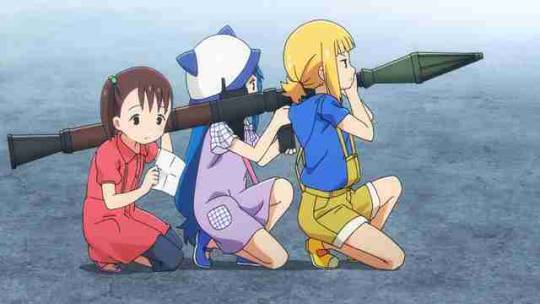
30. Mitsuboshi Colours
Director: Tomoyuki Kawamura Collection composer: Shougo Yasukawa Character designer: Takumi Yokota Animation manufacturing: Silver Hyperlink Kotoha a game-loving baby who, regardless of being very sharp, cannot clear any online game with all of the cheats on this world; Yui, a frontrunner who may break into tears at any second; Sacchan, a vivid child whose thoughts is stuffed with feces; collectively they’re the “Colours,” a bunch of kids beloved by their neighborhood however feared by the jerk of a policeman they love to bother throughout their free time. With simply the correct quantity of exaggeration, Mitsuboshi Colours escalates their childlike habits and ridiculous conversations in hilarious methods, and turns into even funnier when the adults soar in on their ridiculous recreation. Past all that enjoyable hides an actual sense of neighborhood, with loads of incidental interactions that actually make you’re feeling all these facet characters are neighbors. There’s no denying that the supply materials is doing the heavy lifting right here because the anime’s manufacturing is tough across the edges, to say the least, however the allure of the youngsters bringing chaos to the neighborhood and terrorizing a cop is plain. Accessible on: HiDive
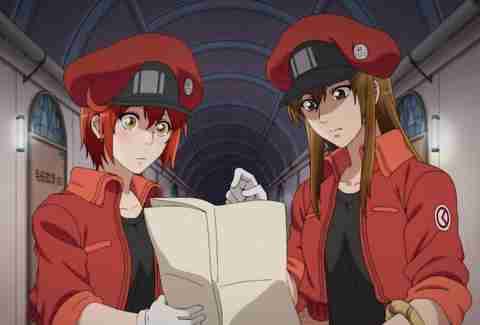
29. Cells at Work!
Director: Kenichi Suzuki Collection composition: Yuko Kakihara Character designer: Takahiko Yoshida Animation manufacturing: david manufacturing Cells at Work’s title leaves nothing as much as the creativeness: It portrays the within of a human physique, inhabited by anthropomorphic cells who do their finest to maintain every little thing up and operating. The central characters are an enthusiastic pink blood cell with a really defective sense of route, and a white blood cell who ruthlessly slays micro organism. Whereas their adventures collectively are for probably the most half lighthearted, the present doesn’t draw back from continuously introducing harmful pathogens and conditions the place well being is in danger — if something, finishing this sequence will improve your respect on your personal immune system. Whereas it stands by itself as a captivating anime set inside a human physique, it additionally occurs to be an informative academic sequence. Fiction calls for some concessions, however the present’s scientific accuracy has taken a couple of biologist abruptly. Its potential to reimagine actual mobile features as quirky conditions completely match the tone of the present with out compromising on info. Fascinating for anybody with information within the area, and instructive sufficient for any viewers keen to be taught a bit little bit of biology whereas watching cartoons. Accessible on: Crunchyroll
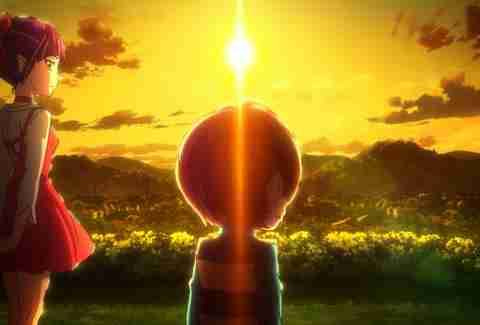
28. GeGeGe no Kitaro (2018)
Director: Koji Ogawa Collection composition: Hiroshi Oonogi Character designer, chief animation director: Sorato Shimizu Animation manufacturing: Toei Animation Although it’s by no means been all that standard abroad, GeGeGe no Kitaro is sort of the historic franchise in Japan, the 2018 sequence being its sixth full animated sequence, leaving apart movies and spin-offs. This recent new story begins with Mana Inuyama, a traditional human lady whose life modifications after she meets Kitaro and the numerous supernatural creatures who inhabit this world. A few of them, just like the appropriately named Daddy Eyeball and the proud however variety Catchick, help Kitaro on holding a steadiness between the human world and what lies past. Not all of the youkai have a average outlook, so the week-to-week battle tends to revolve across the crew subjugating havoc-making creatures straight out of Japanese folklore, with the underlying thread that somebody have to be spurring all of the frequent incidents. What makes GeGeGe no Kitaro (2018) stand out a lot are its delightfully creepy and numerous horror set items, in addition to extra delicate thematic components; having basically been left again within the ’60s when the unique sequence began, a lot of the conventional monsters battle to know current human developments, which widens the hole between societies. Accessible on: Crunchyroll
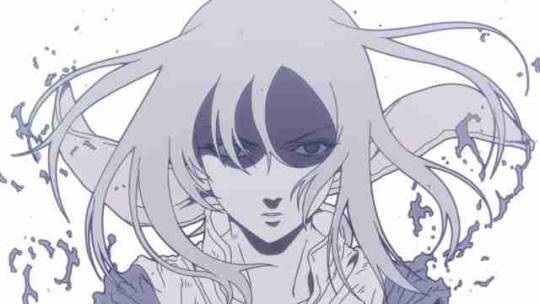
27. HANEBADO!
Director: Shinpei Ezaki Collection composition: Yosuke Kuroda Character designer, Chief animation director: Satoshi Kimura Chief animation director: Makoto Iino, Shuji Maruyama, Kazuo Watanabe Motion animators: Masahiro Tokumaru, Naofumi Hashimoto, Katsunori Kikuchi Animation manufacturing: LIDEN FILMS Sports activities anime is a wholesome, standard subgenre, however hardly ever does it gravitate towards much less glamorous disciplines like… badminton. In the event you imagine that coping with a minor sport could be an excuse for the anime workers to chop themselves some slack although, assume twice. HANEBADO!‘s depiction of badminton matches was rigorously researched and made right into a spectacular pseudo-rotoscoped affair with an incredible sense of influence, intense character element, and thrilling back-and-forths, all accompanied by very solemn route and a sublime sense of grandeur to the framing of each second.
Nevertheless — that is when issues get tough — HANEBADO! can also be keen on whiplash. Whereas the primary few episodes comply with Nagisa Aragaki and her pretty commonplace sportswoman points, the main target ultimately switches to the “actual” protagonist. Ayano Hanesaki is tremendously proficient in comparison with nearly anybody round her, having gotten to that time on account of each a deep love for the game and moderately ridiculous, although traumatic, household circumstances. She’s first introduced as well-mannered, however Ayano snaps and turns into a disrespectful, abusive, nasty participant that makes for a singular POV — as if, for as soon as, we had been seeing a sports activities sequence from the eyes of the overpowered villain the protagonists ought to beat. The demeanor of the characters might be inconsistent, to say the least, and there’s purpose the opinions on the present are very cut up, however there’s no denying that HANEBADO! is considered one of a form.
Accessible on: Crunchyroll, Funimation

26. Free! Dive to the Future
Director: Eisaku Kawanami Collection composition: Masahiro Yokotani Character designer, Chief animation director: Futoshi Nishiya Animation manufacturing: Kyoto Animation It’d been 4 years because the newest TV iteration of this franchise, however it at all times feels proper to have Free!’s passionate swimming adventures again for one more summer time. The forged we’ve been following since their highschool days faces at the moment are faculty college students attempting to determine their future. Some issues have modified, like new director Eisaku Kawanami buying and selling a few of its irreverent humor for extra dignified dramatic moments, however the core basically stays the identical: hot-blooded confrontations between guys, out and in of the pool, with such an apparent yaoi studying that it’d as effectively be textual. Free!’s willingness to give attention to the fragility of the forged, a step that different sequence dominated by masculine ego don’t at all times wish to take, has allowed the characters attention-grabbing emotional development. Frustratingly, a lot of the central battle is predicated on characters and thematic threads from Excessive Pace!, a masterful movie set previously that the TV sequence hasn’t completed an awesome job at acknowledging till now, and that received’t even be out there within the US for a number of months nonetheless. Free! is undoubtedly a messy franchise that was by no means prepared for its great success. Its makes an attempt to suit new materials and previous occasions that had been glossed over inside one cohesive timeline might be moderately awkward, particularly for these viewers who missed an important entry with restricted availability. And but, regardless of all these disclaimers, it’s not by probability that this present has resonated with so many followers. Accessible on: Crunchyroll
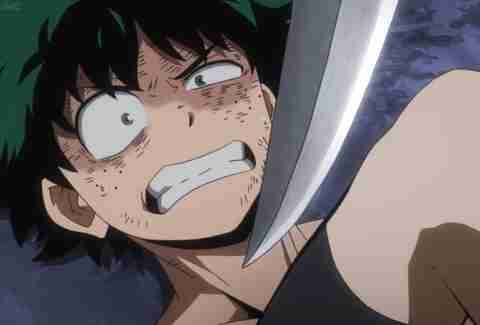
25. My Hero Academia Season 3
Director: Kenji Nagasaki Collection composition, script: Yosuke Kuroda Character designer: Yoshihiko Umakoshi Animation manufacturing: BONES Deku and firm are again for the third installment of My Hero Academia. This season is admittedly a bit extra modest than its predecessor: coaching arcs are hardly probably the most thrilling so its begin is comparatively sluggish, and there’s no denying that the presentation isn’t fairly as impactful as typical since studio BONES is funneling sources towards the upcoming film. That stated, blood-pumping heroism continues to be an integral a part of My Hero Academia’s DNA, so returning followers can be happy to see that each one arcs nonetheless construct as much as thrilling climaxes, and the important thing confrontations obtain the story remedy they deserve. Mixed with the arrival of among the most charismatic allies and foes to the sequence, the plain drawbacks grow to be slight inconveniences moderately than deal-breakers. It will not be the best installment of the sequence, however it’s fairly the entertaining superhero story, nonetheless. Accessible on: Crunchyroll

24. Cranium-face Bookseller Honda-san
Director: Todoroki Owl Collection composition, Script: Shin Okishima Character designer: Naoko Kakinoki Animation Manufacturing: DLE Cranium-face Bookseller Honda-san, based mostly on actual experiences as a gross sales clerk at a bookstore, depicts the actual dynamics between Japanese publishers and bookstores that might solely come from an insider. And certainly, Honda occurs to be the writer narrating his personal anecdotes, holding the core however exaggerating them to extend the satirical issue — as you may inform by the truth that he’s a skeleton inside the sequence, which (presumably) isn’t true to life.
Don’t take this very particular authenticity as an indication that you just received’t be capable to relate to the sequence, although. In the event you’ve ever labored in retail, you’ll instantly get the struggles of Honda and his eccentric coworkers, and even should you haven’t, there’s one thing very common concerning the interactions between the purchasers and the overwhelmed workers. There’s little doubt that the writer holds some grudges — a number of facet feedback about publishing firms are elegantly coated with venom — however the sequence isn’t constructed on spite. Cranium-face Bookseller Honda-san chronicles the demanding job of a bookseller, however in the end comes throughout as a fond memory of it, whether or not it was the strict teaching periods or a daring foreigner obliviously requesting grownup comics. Don’t miss this cozy, humorous present. Accessible on: Crunchyroll
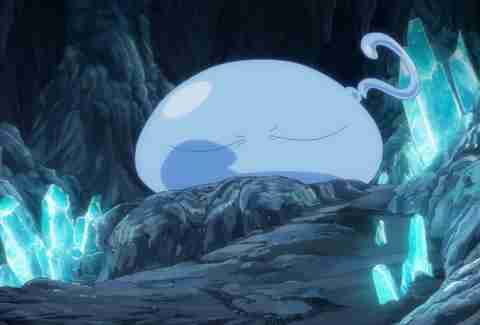
23. That Time I Obtained Reincarnated as a Slime
Director: Yasuhito Kikuchi Assistant director: Atsushi Nakayama Collection composition: Kazuyuki Fudeyasu Character designer, Chief animation director: Ryouma Ebata Animation manufacturing: 8-bit Regular characters being transported to a different world — the isekai style — isn’t only a frequent affair; it’d very effectively be the development presently dominating a sure subset of Japanese media. Amongst these, sequence constructed round videog ame-like mechanics are particularly insidious, so I couldn’t blame anybody who’s bored with these tropes for operating away the second they noticed this present approaching. What’s imagined to make Slimecompletely different: After an workplace employee in his 30s dies prematurely, he abandons his outdated identify and is reborn as a blue blob in a fantasy world.
Now, isekai titles are so considerable that quirky takes on the style are commonplace, however Slime’s straight-faced dedication to its premise makes it really feel oddly real. The thoroughness with which it explores what would occur to a various fantasy world if a small monster who’d gained unimaginable powers instantly appeared tells you that the writer didn’t cease the second they got here up with a foolish thought; they ran away with it. Is a sequence a couple of almost all-powerful blob that is beloved by stunning girls and good-looking males apparent escapism? After all! But it surely’s additionally an amusing fantasy story, with a captivating forged and a pointy manufacturing that makes its bursts of motion (and the lovable morphing animations for the slime, most significantly) a pleasure to observe. Accessible on: Crunchyroll, Funimation

22. At the moment’s Menu for the Emiya Household
Director: Takahiro Miura, Tetsuhito Sato Script: ufotable Character designer: Touko Uchimura Animation manufacturing: ufotable As if to make up for as we speak’s turbulent occasions, 2018 kicked off with a number of calm sequence to heal our souls, 24 minutes at a time. At the moment’s Menu for the Emiya Household is likely one of the most curious spin-offs of the Destiny/ franchise, which, not content material with continuously placing out standard motion sequence, has additionally been branching off in direction of extra comedic ends. Whereas this At the moment’s Menu is pretty amusing should you’re acquainted with the characters, as their leisurely habits is sort of the distinction with their typical fights to the dying, the aim is one thing else: enjoyable with meals. The unparalleled thoroughness when getting ready the dishes virtually makes this present into an animated cooking tutorial, and the coziness when consuming it’s extremely contagious. Accompanied by a pleasing, heat aesthetic, At the moment’s Menu for the Emiya Household is the proper sequence to unwind whereas consuming your self. If it weren’t for the truth that the episodes are launched month-to-month, this may very well be the proper sequence to observe day by day. Accessible on: Crunchyroll
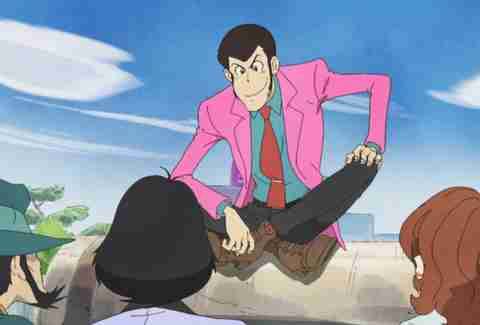
21. Lupin the Third (Half 5)
Director: Yuichiro Yano Assistant director: Daisuke Sako Collection composition: Ichiro Okouchi Character designer: Hisao Yokobori Animation manufacturing: Telecom There’s an plain timeless attraction to Lupin the Third. All through the a long time, the tales of this gang of thieves have been reinterpreted a number of occasions, all threaded with a well-known irreverent spirit. Charismatic cartoon criminals working collectively, and sometimes attempting to one-up one another, whereas escaping from the authorities and conducting ridiculous heists is a straightforward thought, and that’s why it by no means will get outdated. But when the franchise has that everlasting high quality to it, did we have to reinvent the wheel with one thing that proudly boasts itself as a trendy Lupin? Because it seems, sure. The troupe’s adventures in France are structured in a number of brief arcs that revolve round trendy know-how, exhibiting a larger understanding of social media and the web as an entire than most items of fiction, whereas on the similar time nonetheless taking the scenario to amusing extremes in traditional Lupin style. The sequence additionally manages to mix compelling overarching storytelling with extra episodic enjoyable adventures, making it interesting for each franchise newcomers and followers of the outdated method. Accessible on: Crunchyroll
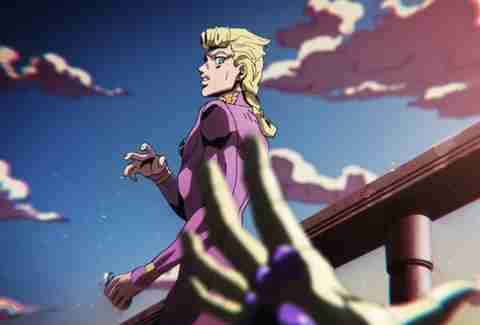
20. JoJo’s Weird Journey: Golden Wind
Chief director: Naokatsu Tsuda Director: Yasuhiro Kimura, Hideya Takahashi Collection composition: Yasuko Kobayashi Character designer: Takahiro Kishida Animation manufacturing: david manufacturing There’s loads of bizarre anime (look no additional than this checklist!), however not all titles can brandish their quirkiness successfully, and hardly any have managed to take action whereas reinventing themselves for many years. Jojo’s Weird Journey is considered one of them, every iteration embarking on an unpredictable journey whereas at all times feeling unmistakably like a season of Jojo. Giorno Giovanna presents a recent POV because the protagonist within the fifth adaptation of Jojo; he’s the son of the enduring villain Dio on a quest to grow to be a benevolent mobster like those that left a powerful impression on him as a baby. His dream to grow to be a Gang-Star — a classy portmanteau he’s earned as a result of the entire forged is trendy, even by the franchise’s requirements — leads him to face many outlandish foes with unimaginable powers. This isn’t the tightest Jojo season on the market, however it is a thrilling experience nonetheless. All of the enduring Jojo qualities are there, which permits for absolutely anything to occur. If its raving fanbase hadn’t already satisfied you to offer Jojo a spin, hopefully now you’ll. Accessible on: Crunchyroll

19. Laid-Again Camp
Director: Yoshiaki Kyougoku Collection composer: Jin Tanaka Character designer: Mutsumi Sasaki Animation manufacturing: C-Station Whereas not extraordinary on paper, Laid-Again Camp is likely one of the most impressed takes on the favored premise of a bunch of youngsters specializing in a selected exercise. Lone-wolf Rin meets large airhead and her-soon-to-be schoolmate and Nadeshiko within the wilderness, which will get the latter to fall in love with outside actions. This might be the beginning of a typical story: extrovert meets introvert and teaches her how doing stuff with pals is just higher. Laid-Again Camp as a substitute chooses to take a extra nuanced strategy, and whereas Rin begins sharing her passion with Nadeshiko, she nonetheless will get to calm down by herself repeatedly whereas her new good friend hangs out with the college’s outside actions membership. An analogous degree of respect is proven in terms of the depiction of tenting, with a lot of their actions and the countryside landscapes rigorously drawn off footage of the actual factor, regardless of the manufacturing as an entire not being excellent.Laid-Again Camp is a bit present that cares, one which will enable you to perceive the attraction of the so-called therapeutic anime. Accessible on: Crunchyroll
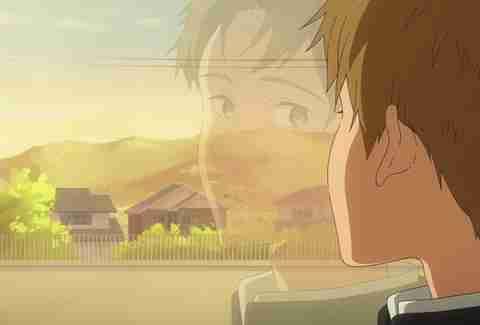
18. Tsurune
Director: Takuya Yamamura Collection composition: Michiko Yokote Character designer: Miku Kadowaki Chief animation director: Nobuaki Maruki Animation manufacturing: Kyoto Animation Japanese archery is supposed to be an introspective, calm martial artwork, so it’s solely becoming {that a} sequence constructed round it could undertake an identical ambiance. Tsurune follows highschool scholar Minato Narumiya, who as soon as fell in love with the sound of the bowstrings — the foundation of Tsurune’s identify in Japanese — however has grown to keep away from archery after creating goal panic, a psychological situation that now not lets him shoot correctly. His assembly with a mysterious, dazzling archer begins his therapeutic course of, which has him becoming a member of the lately re-established Japanese archery membership at college; in any case, Tsurune postulates that there are not any magical fast cures to trauma, however moderately a gradual course of that requires empathy by those that encompass us. A substantial amount of Tsurune’s attraction is watching a bunch of highschool boys sincerely assist one another and are available collectively as a staff, however once more, it’s the game itself that makes it so particular: an intricate, solemn artwork is captured with terrifying accuracy by a staff that at all times reveals utmost respect in direction of their topic issues. It was the distinction between the energetic youngsters and such elegant martial artwork that attracted the director to this title within the first place, and that’s exactly what he’s managed to convey with this glorious adaptation. Accessible on: Crunchyroll, HiDive

17. Pop Group Epic
Director: Jun Aoki, Aoi Umeki Collection composer: Jun Aoki Animation manufacturing: Kamikaze Douga Pop Group Epic is on the similar time one of the memorable anime experiences in current occasions, and one of many hardest suggestions I’ll ever make. True to the spirit of the unique comedian, its adaptation is a sequence of very rigorously constructed non-humor skits that, due to the audiovisual medium, have solely ramped up the insanity. Regardless of technically being a 3-D, CG manufacturing, at any level it might change to deliberately hideous 2-D animation, beautiful hand-drawn artwork, pixelated recreation parodies made by a college scholar, or an arts-and-craft stop-motion spectacle. Whereas it does have a recurring couple of characters – the small ball of anger Popuko and her equally harmful good friend Pipimi – it’s laborious to say what Pop Group Epic is about; if it actually had been about one thing, it could shortly get bored with that and transfer on to one thing else. And that, in fact, does apply to the voice actors as effectively, as every episode loops with two completely different units of voices, simply to get changed on the following episode. This present might both amuse you greater than the rest or come throughout as an inexplicable alien relic, however it’s value a attempt both means. Accessible on: Crunchyroll, HiDive, Funimation
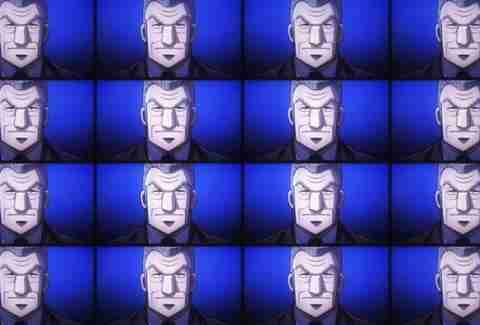
16. Mr. TONEGAWA Center Administration Blues
Director: Keiichiro Kawaguchi Collection composition: Mitsutaka Hirota Character designer: Haruhito Takada Animation Manufacturing: Madhouse Mr. TONEGAWA Center Administration Blues is a present that shouldn’t exist in 2018. Frankly, it makes no monetary sense for anybody to fund an adaptation of a spin-off from a distinct segment title that final made it to TV screens in 2011, and it makes even much less sense to suggest it to a western viewers, contemplating that the works of Nobuyuki Fukumoto by no means appeared to get the devoted following they obtained in Japan. And but, right here we’re as a result of TONEGAWA’s merely that good.
To sum issues up, Fukumoto is a manga artist finest identified for his sequence about playing — a theme he makes use of to discover the psyche of his characters, to criticize the dog-eat-dog capitalist panorama, and to have some unbelievably thrilling confrontations. His most well-known title is Kaiji, which follows the titular character’s misfortunes as he finds himself concerned in more and more outrageous playing to flee debt. And years after the tip of its final animated season, we get TONEGAWA, a comedic spinoff about one of many intermediate villains, which focuses on the inside workings of the corporate and the amusing preparations of lethal gambles.
Regardless of being written by a distinct writer, TONEGAWA understands what made the confrontations on the principle sequence so thrilling and applies that very same lethal rigidity to probably the most mundane office conditions. However very like Kaiji was really illustrating how unfair our society is on prime of all of the thrilling showdowns, TONEGAWA’s a pointy criticism of company tradition behind hilarious exaggeration. So, let’s make this a double suggestion: Go watch Kaiji, if you have not, and afterward, sit again and luxuriate in this new spinoff that has no enterprise current. Accessible on: Crunchyroll, HiDive
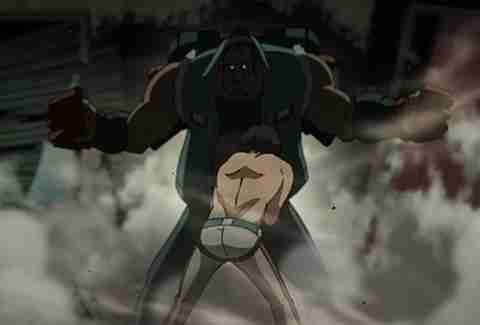
15. MEGALOBOX
Director, idea design: Yoh Moriyama Script: Katsuhiko Manabe, Kensaku Kojima Character designer: Hiroshi Shimizu Animation manufacturing: TMS Leisure 3xCube Initially conceived as an anniversary undertaking for the traditional boxing sequence Ashita no Joe, MEGALOBOX mirrors many beats from its iconic predecessor whereas comfortably standing by itself as a frenetic underdog story. This non secular successor follows a younger man nicknamed Junk Canine who will get by within the slums by throwing matches of megalo field, a brand new tackle the game that options fighters with enhanced energy due to mechanical appendages. A accident will get him to goal to Megalonia, a event meant to award the strongest boxer that just a few pre-selected people are allowed to hitch. His story is made all of the extra compelling by the distinctive cohesive imaginative and prescient that director Yoh Moriyama showcases; the densely packed world with a transparent divide between the poor non-citizens and the trendy metropolis, the unimaginable soundtrack with beats woven into the core of the motion that prioritizes sheer influence above every little thing else, the aesthetic paying homage to cel-era animation (achieved by uncommon methods like deliberately decreasing the decision) — all of it clicks in a means that makes you respect each single determination the workers took, even while you don’t agree with them. MEGALOBOX seems like distilled coolness, the product of a bunch of creators who knew precisely the form of kickass anime they needed. Accessible on: Crunchyroll
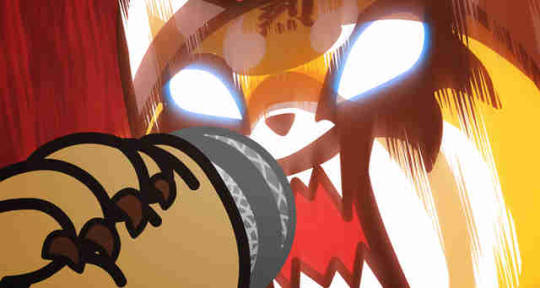
14. Aggretsuko
Director, Author, Animator: Rarecho Animation manufacturing: Fanworks Whereas the marketable cuteness of their designs by no means modifications, Sanrio’s many properties have taken over the leisure world with enduring aesthetic icons like Hi there Kitty and all types of TV reveals casually selling their IP. Aggretsukocomes from the identical mould, though its edge is notoriously sharper. Its modest origins had been as a sequence of one-minute episodes inside a Japanese TV program, which featured the misadventures of pink panda Retsuko, stricken by exaggerated but very genuine workplace politics and the whims of her eccentric coworkers, an identical mixture of true-to-life traits taken to amusing extremes. This all got here from flash animator Rarecho, who directed, wrote, animated, and even lent his personal voice for Retsuko’s karaoke dying steel antics: the one launch valve for all of the stress she bottles up every day.
What might have stayed as a unusual, enjoyable, however painfully relatable little sequence discovered new life when it obtained picked up by Netflix, which didn’t solely increase its attain but additionally elevated its scope by granting it 15-minute episodes. In consequence, the rebootedAggretsuko retains all of the items that already labored however constructs one thing bigger with an attention-grabbing overarching narrative and extra space for the principle characters to breathe. This new format strengthened its thematic punch, too, giving extra influence to its criticism of chauvinism and crusty labor practices. Aggretsuko seems like a product of its time in the very best of the way, so it’s no shock that it’s grow to be a worldwide phenomenon with a second season already greenlit. Accessible on: Netflix
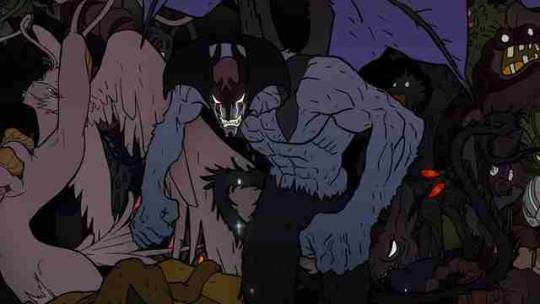
13. DEVILMAN crybaby
Director: Masaaki Yuasa Collection composer: Ichirou Ookouchi Character designer: Ayumi Kurashima, Kiyotaka Oshiyama Animation manufacturing: Science Saru Beloved auteur Masaaki Yuasa has been fairly lively ever since he co-founded Science Saru, however he hadn’t had an opportunity to direct a full-length sequence at his new studio till now. His first go at it was nothing aside from a captivating reinterpretation of Go Nagai’s traditional Devilman sequence, which brings it to trendy occasions and modifications all occasions in line with the setting whereas one way or the other holding its core intact: the immensely variety teenager Akira Fudo continues to be pushed into fusing with a demon by his cryptic good friend Ryo Asuka as a technique to combat again towards humanity’s impending doom, however the narrative that unfolds has been absolutely reworked in a means that feels very respectful in direction of the supply materials. Don’t get me fallacious: This adaptation is each bit as ugly as the unique work after which some, Yuasa exploiting Netflix’s lack of restrictions to make a visceral spectacle of hyper-violence, intercourse, and dying. It took a very long time to digest DEVILMAN crybaby, and two months after the actual fact, I’m nonetheless not solely positive about my emotions on it. What I do know for positive although is that it was one of the impactful, unforgettable experiences on this medium, and based mostly on that alone it’s simply earned a suggestion — so long as you see your self having the ability to abdomen it! Accessible on: Netflix
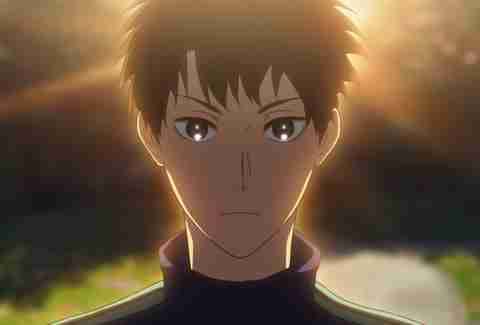
12. Run with the Wind
Director: Kazuya Nomura Collection composition, Script: Kohei Kiyasu Character designer: Takahiro Chiba Animation manufacturing: Manufacturing I.G As soon as a younger athletic prodigy, first 12 months Kakeru Kurahara finds himself in serious trouble till he’s saved by a fellow college scholar in control of a dormitory. Little does he know that it was all a set-up to get him to take part in a famend relay marathon alongside different, equally clueless inhabitants of the dorm. We’re not simply coping with underdogs right here: A lot of the runners aren’t ready to compete in any means, and even keen to take action within the first place. So moderately than thrilling competitions from the beginning, the hook right here is in watching the characters slowly start to understand the game and imagine in themselves. Run with the Wind possesses an inspirational voice that shines: Greater than the rest, it’s watching the evolution of its numerous, likable forged that makes this anime such a delight. Every of them might face completely different societal pressures and private shortcomings, however Run with the Wind reveals us how operating can carry such an uneven group collectively. In the event you typically end up wishing for anime with extra mature casts, or should you merely fancy a stable non-standard sports activities sequence, Run with the Wind ought to be up your alley. Accessible on: Crunchyroll, HiDive
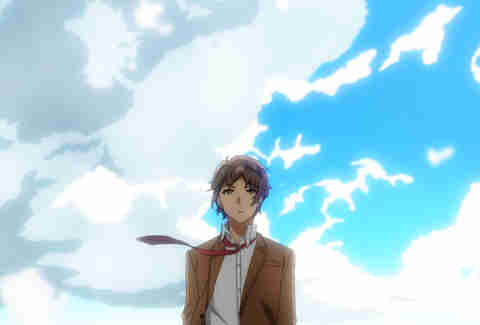
11. Rascal Does Not Dream of Bunny Lady Senpai
Director: Soichi Masui Assistant director: Kazuya Iwata Collection composition, Script: Masahiro Yokotani Character designer, Chief animation director: Satomi Tamura Animation manufacturing: CloverWorks Essentially the most unlucky, unfitting title of 2018 hides a bizarrely compelling sequence about adolescence that’s far more than the sum of its components. Rascal Does Not Dream of Bunny Lady Senpai needed to work laborious to earn the optimistic reception it’s gotten. It’s not simply the off-putting title: The seemingly trite premise — highschool scholar Sakuta Azusagawa serving to a sequence of gorgeous ladies recover from the mysterious Puberty Syndrome situation — and a rocky begin led to fairly a number of folks instantly writing it off. Those that persevered, nevertheless, had been received over by what this present has to supply: an trustworthy exploration of teenage (and extra common) anxieties, underneath the guise of a supernatural pseudo-scientific phenomena. Rascal is likely one of the darkish horses of 2018, which additionally is not significantly shocking. In any case, doubtful trying titles that develop into higher than they’ve any proper to be are very a lot an anime fixed. Accessible on: Crunchyroll, Funimation, Hulu
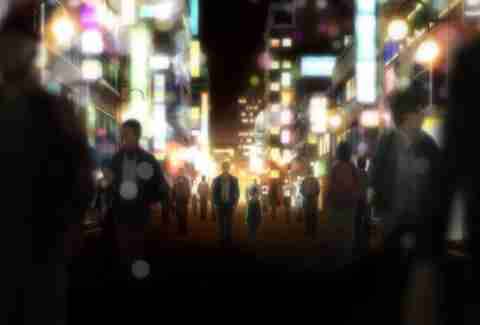
10. Hinamatsuri
Director: Kei Oikawa Collection composition, script: Keiichiro Ochi Character designer: Kanetoshi Kamimoto Essential animators: Tetsuya Takeuchi, Ryo Araki, Kuniaki Masuda, Kenrou Tokuda Animation manufacturing: really feel. The hedonistic lifetime of a grasping member of the yakuza takes a flip for the weird when an esper lady named Hina fairly actually crashes into his residence. Their already ridiculous coexistence is made even funnier by the enchanting rhythm of the animation and particularly due to director Oikawa’s restraint in terms of portraying all of the outrageous occasions, which one way or the other suits how weirdly easygoing the vast majority of the forged finally ends up being. And past how effectively it features as an absurdist comedy, Hinamatsuri is elevated by how gracefully it combines that with genuinely heartfelt character moments; gags involving facet characters in conditions as precarious as homelessness don’t really feel like punching down, as a result of the present is as invested in making you snigger as it’s in respectfully portraying their struggles and well-earned successes. As long as these topic issues don’t inherently put you off, this is a wonderful quirky comedy with plenty of coronary heart. Accessible on: Crunchyroll, Funimation
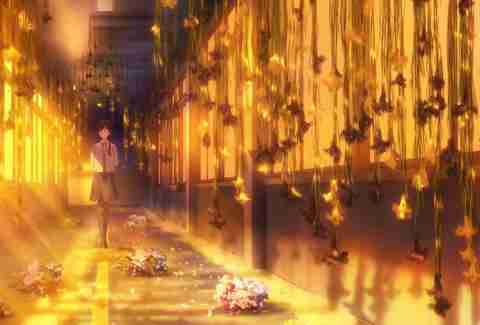
9. Bloom Into You
Director: Makoto Kato Collection composition, Script: Jukki Hanada Character designer, Chief animation director: Hiroaki Goda Animation manufacturing: TROYCA Bloom Into You follows Yuu Koito, a lady in her first 12 months of highschool who pines for the nice and cozy, fuzzy emotions portrayed in romantic media, and but she will by no means really feel them in her personal life, even in conditions the place she feels she ought to. This creates an emotionally pressurized gulf between her and her friends, as Yuu’s anxiousness of being unable to reside as much as societal expectations torments her. Finally, she comes throughout a seemingly excellent upperclassman who additionally claims she holds nobody in a particular place in her coronary heart — till Yuu explains her scenario, inflicting her to instantly fall for our confused protagonist. Bloom Into You step by step builds right into a flirty, dorky love story between these two ladies, resonating with the push and pull of a restrained courtship. Its distinctive supply materials, within the palms of a succesful manufacturing staff, grasps the characters’ psychological landscapes, projecting them by evocative, stunning route. Accessible on: HiDive
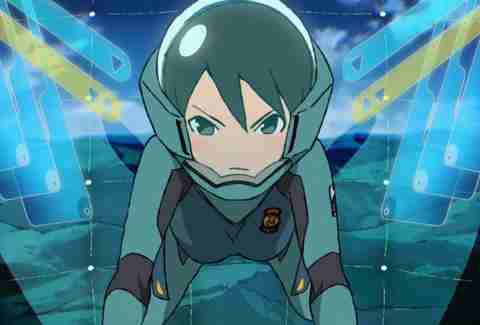
8. DRAGON PILOT: Hisone and Masotan
Chief Director: Shinji Higuchi Director: Hiroshi Kobayashi Collection composition: Mari Okada Animation character designer: Yoshiyuki Ito Animation Manufacturing: BONES Each in a literal and figurative sense, DRAGON PILOT: Hisone and Masotan is an unique anime. Not solely is it not drawing from any supply materials, there merely is nothing else fairly prefer it. Protagonist Hisone is in a relentless battle due to her outspokenness — fairly an issue for a younger girl who lately joined Japan’s extremely regimented Self-Protection Pressure. It’s exactly that awkwardness that results in her assembly with the opposite titular character: Masotan, an lovable jet-fighter dragon hybrid. A extra commonplace sequence would have the teen who by chance stumbled onto a robust, closely guarded army secret use her new powers to combat some kind of alien menace, however this present has no time to waste with trivial issues like that.
What does it give attention to, then? A mess of interconnected and surprisingly mature themes: the glass ceiling, the unimaginable steadiness of an emotional {and professional} life, how deeply rooted sexism is in establishments like the military, the position custom performs in these issues, and so forth. That is all wrapped in a unusual envelope that manages to not make gentle of the actual issues it addresses straight, with out shedding its humor alongside the best way. DRAGON PILOT: Hisone and Masotan is a melting pot of concepts the place all of the workers managed to make a distinction with out hijacking the whole dish; chief director Shinji Higuchi is equal components attracted and important of army techniques, whereas author Mari Okada is not any stranger to feminist themes, therefore this poignant mixture. Even the animation and background artwork groups confirmed their persona by the delightfully expressive, stylized character artwork and the beautiful historically painted sceneries. Do your self a favor and provides this distinctive present a attempt. Accessible on: Netflix
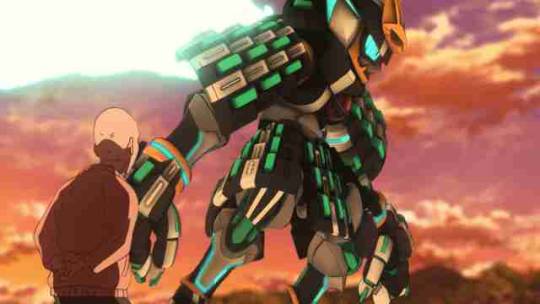
7. Planet With
Director: Youhei Suzuki Creator, Collection composition, Authentic drafts: Satoshi Mizukami Animation character designer: Kazunori Iwakura Animation manufacturing: J.C.STAFF Manga artists are inclined to take extra of a passive position when their work is made into animation. Nevertheless, Lucifer and the Biscuit Hammer’s writer Satoshi Mizukami is an distinctive determine. When he was requested to give you an idea that may be concurrently revealed in comedian and anime kind, he wrote screenplays and supplied visible tips for the whole TV sequence. Planet With may be very a lot his child. It appears essential to ascertain the place the present comes from since Planet With is a mixture of Mikuzami’s whole repertoire. It embodies every little thing the writer stands for: heroism that ought to by no means be at odds with kindness, constructing familial bonds between folks with no blood relation, an understanding of Japan’s mecha and sentai traditions, all wrapped up in a unusual humorousness. What seems to be an ordinary sci-fi anime state of affairs — the younger Souya Kuroi is compelled to face alien invaders — shortly seems to be a galactic battle involving a number of factions. The thematic density of every episode makes them really feel such as you’ve gone by a whole arc inside 20 minutes, and but it’s by no means an awesome expertise. Only a few folks can play with components as commonplace as those Mizukami is keen on however put collectively one thing as distinctive and majestic as Planet With. Accessible on: Crunchyroll

6. Encouragement of Climb (Season 3)
Director, Collection composition: Yusuke Yamamoto Script: Kazuyuki Fudeyasu Character designer, Chief animation director: Yusuke Matsuo Animation manufacturing: 8-Bit Anime a couple of group of pleasant ladies having fun with outside actions are on a roll this 12 months. After the published of its third season, Encouragement of Climb maintains the doubtful honor of being one of many favourite anime of the few individuals who’ve watched it. Many components have contributed to this: a easy premise and saccharine exterior that postpone a large chunk of viewers, spotty availability, even the truth that the whole first season was about so long as one commonplace anime episode. Ever because the sequence obtained expanded into dozens of half-length episodes from the second sequence onwards, nevertheless, Encouragement of Climb has grow to be one of many biggest examples of slice of life anime. It’s obtained that nice, soul-healing high quality to it that pulls followers to the style within the first place, whereas on the similar time providing extra poignant, typically downright soul-crushing arcs that result in actually cathartic resolutions. This third season, cute because it begins, is solely constructed across the painful, conflicting emotions when a socially awkward companion you treasure drifts away from you after you’ve pushed them in direction of new friendships your self. These nuanced emotions are delivered with the grace of one of the spectacular trendy anime productions, with many episodes animated by single people and others attracting tons of proficient artists as a substitute.
As glowing of a suggestion as that is, it’s essential to notice that the supply points are not any joke: Resulting from licensing issues, it’s presently unimaginable to legally watch Season 2, that means that stepping into the sequence in the meanwhile is a little bit of a nightmare. In the event you do get the chance although, don’t hesitate, even when this sort of present is not normally up your alley. Accessible on: Crunchyroll
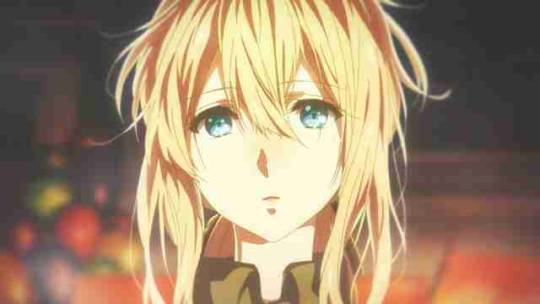
5. Violet Evergarden
Director: Taichi Ishidate, Haruka Fujita Collection composer: Reiko Yoshida Character designer: Akiko Takase Animation manufacturing: Kyoto Animation Having misplaced the parental determine that meant the world to her, and dwelling on her single position as a instrument of warfare, Violet finds herself with no function. Pushed into accepting a job as an “Auto Reminiscence Doll,” basically a author for rent gussied up with Victorian aptitude, her virtually robotic self step by step grows to know the facility of communication and the numerous kinds affection can take. Though her growth is sluggish and she or he’s not probably the most instantly compelling character, the present’s influence will increase tenfold when it switches to episodic tales that typically have Violet as a mere spectator. Her job takes her to completely different settings with palpable, distinct identities, however it stays thematically constant, with every episode pushing her nearer to the reply she seeks. It’s a sentimental sequence to the purpose of being tacky, however it earns that grandeur by the masterful route and obscenely lavish manufacturing. If you’d like an anime to make you cry, Violet Evergarden can be delighted to supply simply that. Accessible on: Netflix
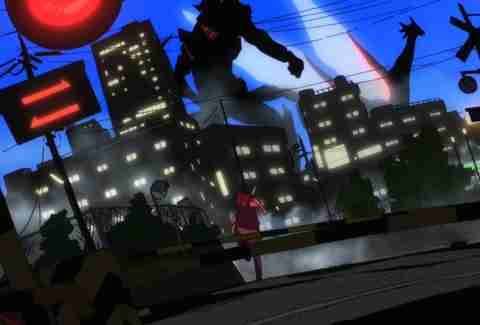
4. SSSS.GRIDMAN
Director: Akira Amemiya Assistant director: Yoshiyuki Kaneko Script: Keiichi Hasegawa Character designer: Masaru Sakamoto Animation manufacturing: TRIGGER In an age the place uninspired reboots are the bread and butter of many artistic industries, SSSS.GRIDMAN is an surprising beacon of hope. For individuals who grew up with Gridman the Hyper Agent (or its American model, Superhuman Samurai Syber-Squad), they’ll get to relive their childhood with a sequence that doesn’t simply pay homage to its origins, however follows up on them in surprising methods. It is a area of interest title forcefully introduced again to life by a director who merely beloved it — together with different mecha-driven sequence, particularly Evangelion, from which it takes loads of directorial cues — with out an oz of cynicism. The results of Amemiya’s staff’s efforts are a frankly intriguing narrative, numerous charming throwbacks to the ’90s, and engrossing route that places most anime this 12 months (and any 12 months) to disgrace. The brief bursts of thrilling 3D motion may persuade you that the current and future may not be so dangerous in any case. Don’t sleep on this one! Accessible on: Crunchyroll
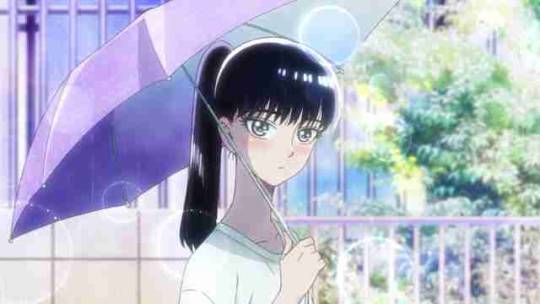
3. After the Rain
Director: Ayumu Watanabe Collection composer: Deko Akao Character designer: Yuka Shibata Animation manufacturing: WIT Behind a doubtful age-gap romance premise hides a gorgeous, introspective story about discovering a brand new purpose to reside at two very completely different factors in life. Akira Tachibana’s harm forces her to stop the observe membership to which she had devoted her youth, clouding over her happiness. It’s solely after assembly a eating place’s disillusioned middle-age supervisor that she will see what awaits after the rain, and maybe start shifting on. Tying the climate to feelings is an outdated trick, however this present’s swish route is miles forward of the competitors, able to nailing each juvenile femininity and painful sorrow. A masterful melancholic piece that can sadly postpone some viewers. Accessible on: Amazon
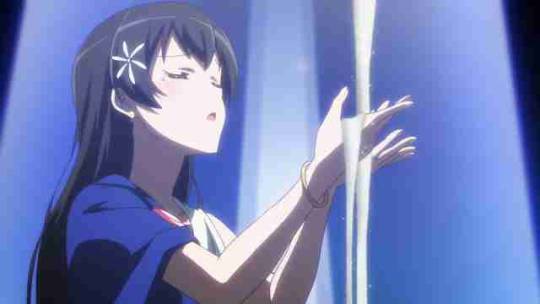
2. Revue Starlight
Director: Tomohiro Furukawa Assistant director, Revue and weapon designer: Takushi Koide Collection composition: Tatsuto Higuchi Character designer: Hiroyuki Saita Animation manufacturing: Kinema Citrus Revue Starlight, a real multimedia franchise with beginnings as a musical, must be seen to be believed. The anime sequence faucets into the historical past and grandeur of Japan’s Takarazuka Revue, an all-female theater troupe that adapts principally Westernized productions, however the unbelievable symbiosis between its themes and the anime’s artistic staff elevated the idea additional than anticipated. On a floor degree, Revue Starlight is the story of a bunch of women competing to safe a spot because the lead performer. It’s cute, cheerful, and there’s an actual sense of musicality to the each day life occasions… till all of the pleasantries are tossed out the window and the combat for the highest turns into very literal: The characters face one another in fantastical staged matches.
Although that is his main directorial debut, Tomohiro Furukawa has confirmed he’s considered one of Japan’s most noteworthy up-and-coming creators. The theatrical anime idea he inherited from his mentor Kunihiko Ikuhara turned out to be the proper toolset for this undertaking, and his staff of animators ambitiously seize the eagerness of the preventing duet songs. Revue Starlight is a shocking expertise that offers with the sacrifices one makes for a profession, difficult techniques, the fixed concern of getting already peaked, and far more. It is a joyful sequence that knew find out how to get critical with out following the trendy development of overly grim twists. And it does all that with critical fashion. Accessible on: HiDive

1. A Place Additional Than the Universe
Director: Atsuko Ishizuka Collection composer: Jukki Hanada Character designer: Takahiro Yoshimatsu Animation manufacturing: Madhouse If we’re speaking about proudly sentimental anime, A Place Additional Than the Universe can also be a superb instance of loud supply of feelings not essentially erasing their nuance — a trademark of director Atsuko Ishizuka. Excessive-schooler Tamaki Mari needs to realize one thing massive whereas she’s nonetheless at an age the place distractions are allowed, however she’s at all times hesitated in terms of taking the final step. She’s shortly drawn to her schoolmate Shirase Kobuchizawa, who has a repute of being a little bit of a weirdo due to her dream to go to Antarctica. And that’s precisely the place they’ll go, accompanied by two different very plausible teenage characters with a little bit of a bent to get into amusing issues. Profitable as a coming of age sequence, respectable as character vignettes, and easily hilarious when it’s goofing round — this present does so many issues effectively that you just’re very more likely to get one thing out of it. Accessible on: Crunchyroll
The post Best Anime to Watch – Top 30 Anime of 2018 appeared first on Superheros home.
0 notes